Tapestry takes time and effort to unravel, but the result is worth the wait
![]() The expectations placed on some board game designers are, simply put, too high. One designer who finds himself in the (both enviable and dubious) position of being considered among the very best of all time is Jamey Stegmaier, the founder of Stonemaier Games. Tapestry is Stegmaier’s latest design and by now, you’ll probably have heard that it is both the best and worst game of all time depending on which of the various partisan groups within the community that you listen to.
The expectations placed on some board game designers are, simply put, too high. One designer who finds himself in the (both enviable and dubious) position of being considered among the very best of all time is Jamey Stegmaier, the founder of Stonemaier Games. Tapestry is Stegmaier’s latest design and by now, you’ll probably have heard that it is both the best and worst game of all time depending on which of the various partisan groups within the community that you listen to.
Such hyperbole is common these days and, whilst I can’t say that Tapestry is the best thing since sliced bread, it’s certainly not the disappointment that some of its more vocal critics suggest. To understand why it divides opinion so much, I’ve tried to play it with as many different groups, at as many different player counts and with as many possible variations in set up as I could.
First of all, what is Tapestry? Is it a civilization-building game? An engine builder? Is it a points salad style of game? It’s actually kind of all of those things with a few other bits and pieces thrown into the mix, yet aside from probably the point salad bit, I don’t feel that Tapestry has a distinct mechanical theme. The visual theme is certainly civilization-building, but I have to admit that I agree with the critics who say that this element doesn’t come through strongly in the mechanics.
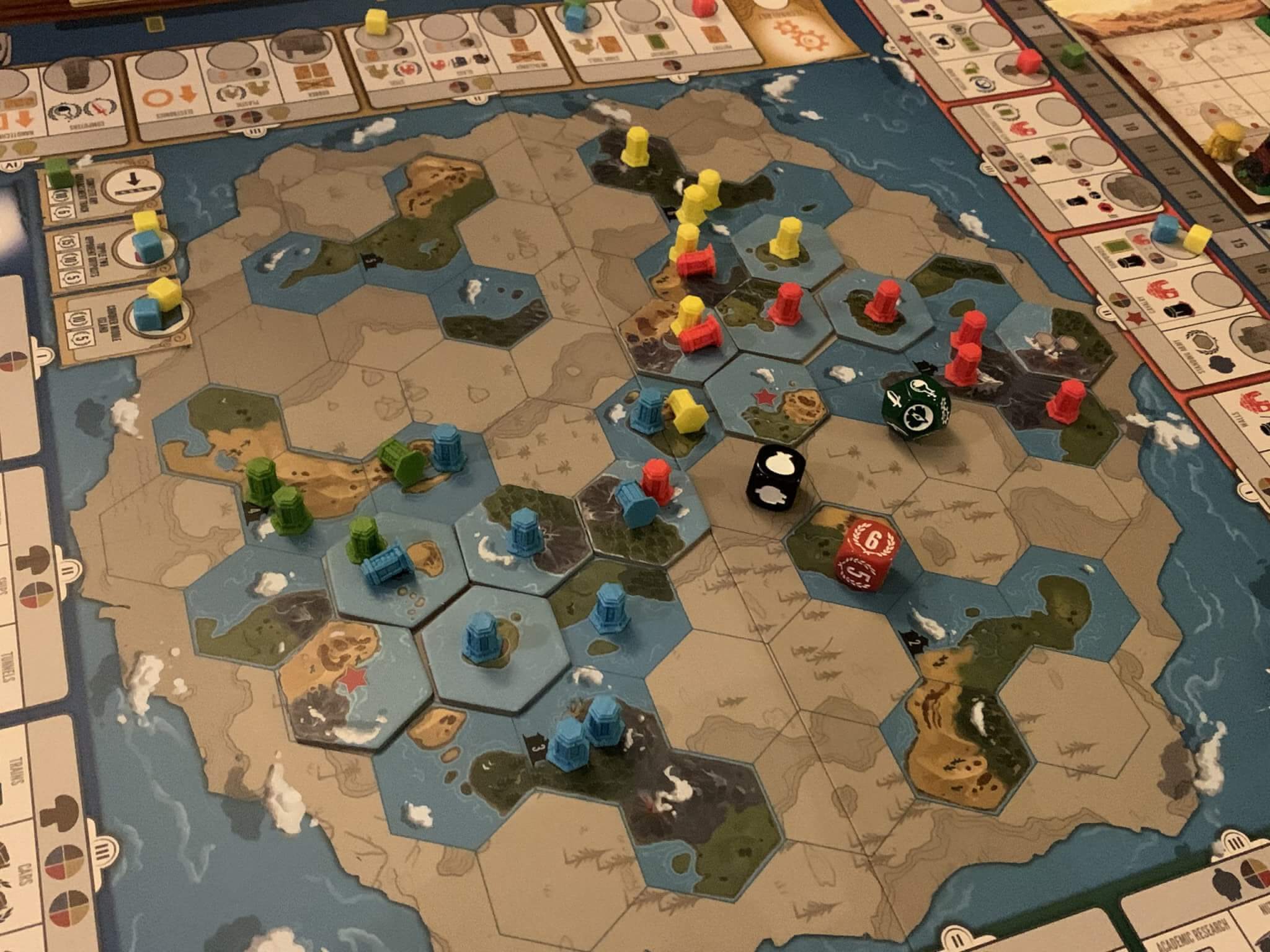
Understanding the setup is as critical as understanding how each turn flows, since the civilisation that you end up playing as will likely have a defining effect on your strategy. The actual choice of civilisation will likely be made randomly, but sometimes I play with the players being able to choose from two drawn at random, or we draft them. This approach works well when playing with experienced players, but with newer players, it will likely give an advantage to anyone who has played the game before.
Part of that logic is to do with another area that Tapestry is criticised for, which is balance. It’s true that there are some civilisations that are pretty strictly better than others, and as a result of this Stonemaier Games have released some balancing tweaks that players can use — again, I’ve tried the game both with and without these tweaks (obviously not in every possible connotation though).
It is also not unreasonable to set up and specifically give new players “better” civilisations and as always with board games, I look to the group host to apply house rules that make the experience fun for everyone. It’s rare that I invite people to my home to play games just to arbitrarily beat them, and if that means tweaking things slightly, I’m happy to do it.
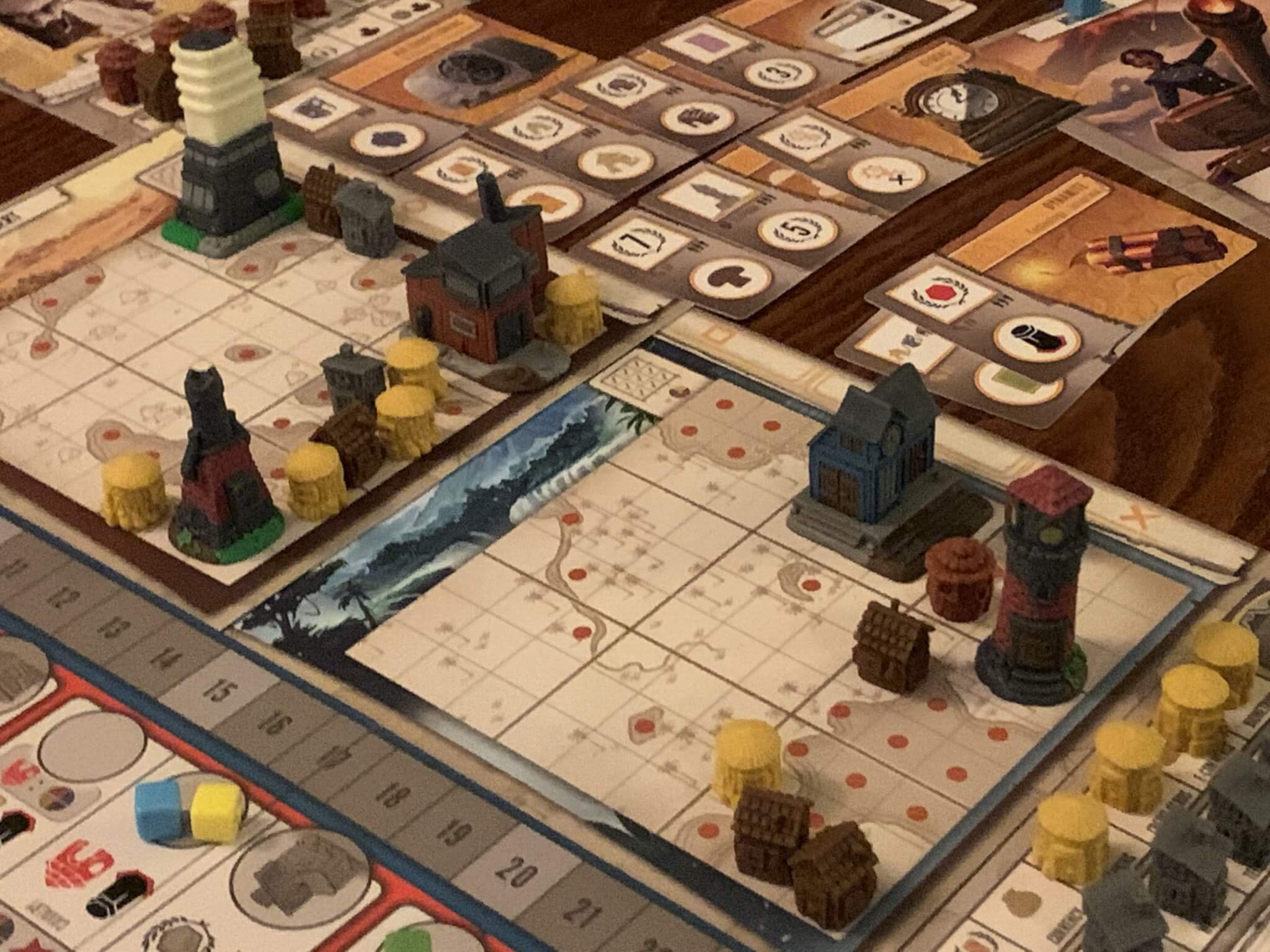
In any case, with a civilisation chosen for each of up to five players, everyone takes a player board, a set of coloured pieces and a capital city board, then a number of building miniatures that more or less relate to the four basic resources — cash, culture, population and food. These buildings are then placed on corresponding tracks on each player board, leaving just the leftmost space showing and conveniently reminding the players of the resources to be drawn at the start of the game.
Among these is the first tapestry card that the players will see, which is drawn and kept secret. In a normal game, each player will place three of these cards onto their player board sequentially from left to right, with each one signifying a defining factor for that age of their civilisation. One starting ability and several tapestry cards might enable more than three cards to be played, although you may or may not see these from one game to the next.
The main thing to note (and another minor criticism of the game) is that tapestry cards are quite varied in strength, and players who draw a rubbish or simply unusable one during this first step will need to bear that in mind throughout their whole first era. I’ll explain more about this when I go through turn structure, but this is simply because tapestry cards are played at the end of the previous era, so you won’t actually play one until you’ve been through your first round of turns.
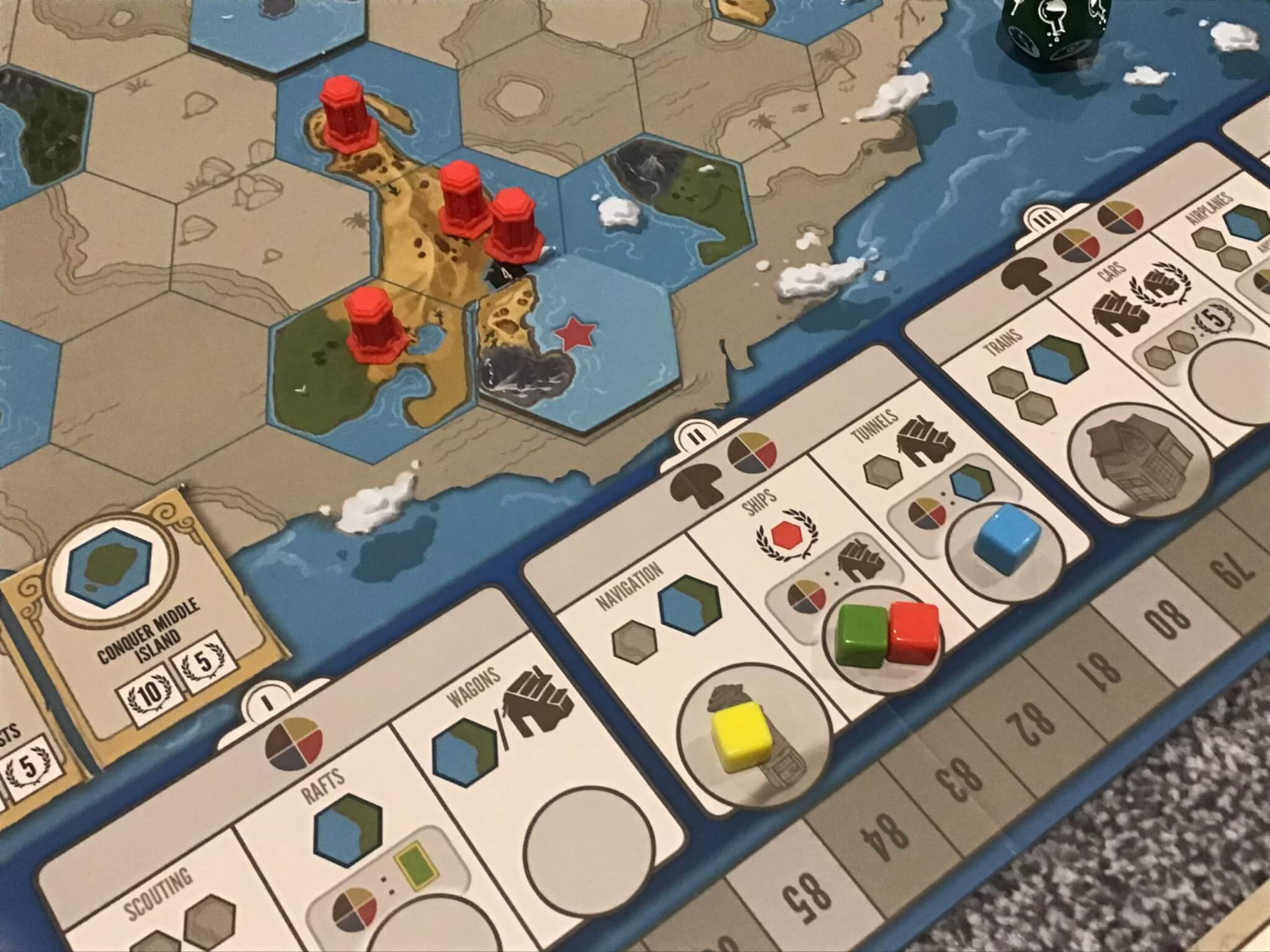
Because some players do feel disadvantaged by their starting tapestry card and newer players often feel directionless, it can help to use a house rule of drawing two and choosing one for this first step only. This allows the players to have at least some say in which card they take, and it can give direction to a newer player, or help a more experienced player hone in on the strategy they really want, rather than what the cards dictate.
Since we’re getting into a bit more mechanical detail, let me break down the actual gameplay structure for you. In Tapestry, a player will simply choose between one of two things – an action turn, or an income turn. I’ll actually explain the less frequent of these (the income turn) first, since it should theoretically be a bit more brief. The resources and tapestry card drawn at the start of the game actually represent the first income turn, and the reason no tapestry card is played is because the “Maker of Fire” era has just begun, as printed on each player board.
On an income turn, a player will resolve a number of steps in order. They will first activate their civilisations unique power (if applicable) and then, on their second, third and fourth income turns only, they will play a tapestry card if they have one. Where a player has multiple tapestry cards, they simply choose their preferred card for the next era. Some cards have “when played” abilities, whilst others affect the era ahead on an ongoing basis.

After this, the player will then upgrade one technology card, assuming that they have one in either its first or second stage of development. Technology cards are taken throughout the game during certain action turns, and I’ll explain how to get them later. For now just know that each one has no effect when it is first taken, but it will offer some benefit when it is upgraded for the first and second times, whether as part of the income phase or again, because of an action turn.
Finally, the player takes their income. This is simply a case of assessing each of the four resource building tracks and then moving their resource marker for the appropriate resource up. At the same time, any points earned for revealing scoring markers on the same tracks are scored. For clarity, the tracks that determine the resources and point-scoring opportunities taken are the same tracks that the buildings we put out during setup sit on, so the more buildings you construct, the more resources and or scoring you’ll do during an income turn.
And that’s it for income turns. Each player will perform five of them per game, with the first one being the initial setup (so it’s not really an income turn) and the last being the final scoring (so again it’s not really the same). What’s really unique about is that a player may take their income turns any time they like and the game might be over for them in just four actions — although clearly in that example, they’ll very likely lose.
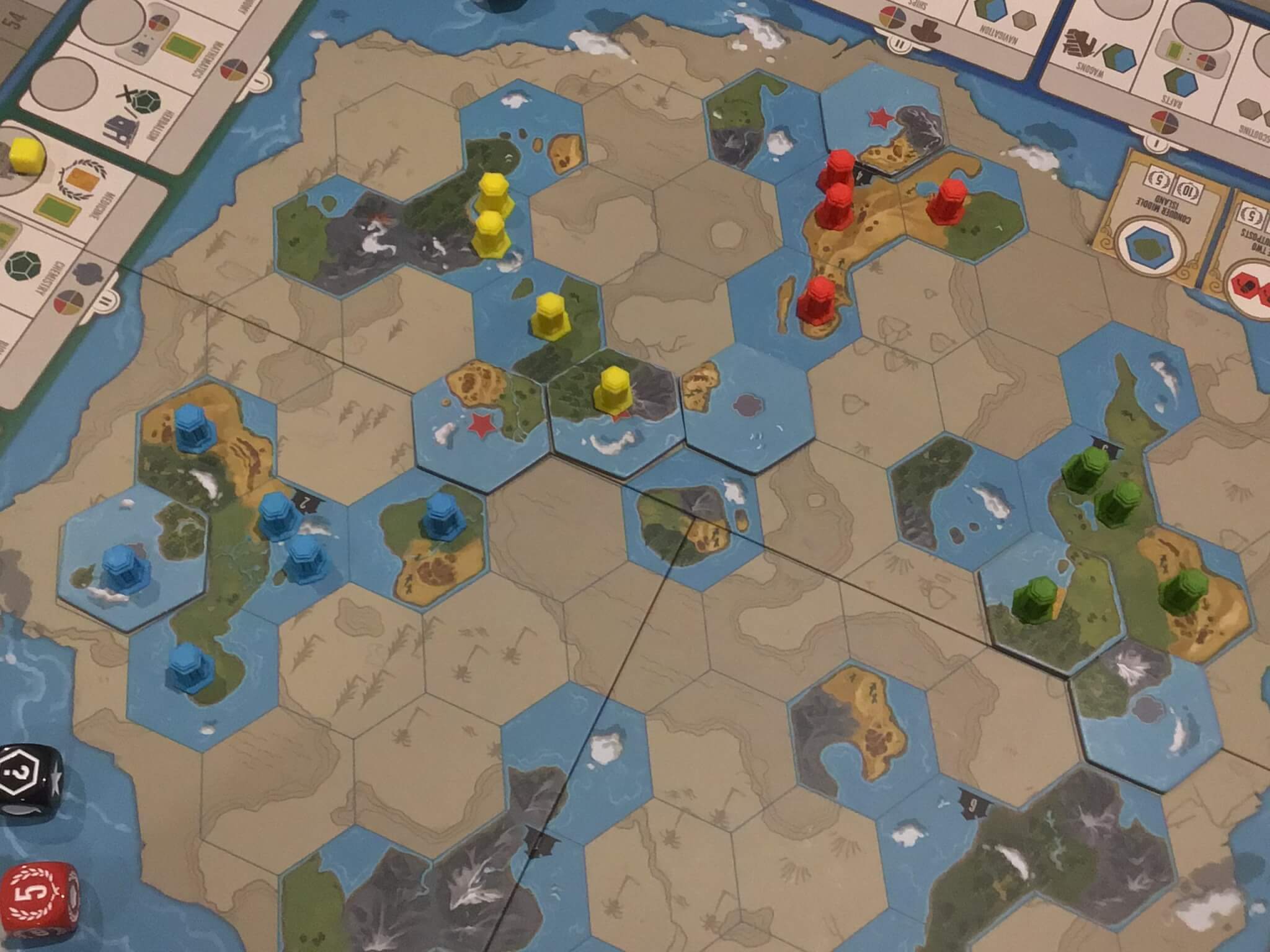
Action turns are also relatively simple, but have much more expansive possibilities. To summarise them, a player simply chooses one of the four tracks on the board (Technology, Military, Exploration and Science) and pays the resources to advance their marker on it. The first three steps of any track cost just one resource of any kind, but as players enter the second, third and fourth era, the cost increases to include specific and multiple resources.
When a player advances on a track, they take the printed action. These actions are many and varied, and often come with a bonus action where the player can pay something — like an extra resource or a tapestry card — to receive something. Actions include placing buildings from their player board onto their capital city to fill in spaces, drawing new (technology or tapestry) cards, taking exploration tiles and/or placing them on the board to build out the map or conquering neighbouring spaces.
There really is no limit to the different actions and it’s hard to explain all of them, but just know that each turn you’ll only really be able to get to four of them (one per track) on your current turn, so whilst ultimately there’s a lot to do, on a turn by turn basis the choices are limited and therefore the need to analyse is limited. Yes, you’ll want to check your resource totals so that you can plan out your next move and perhaps one or two after, and you may need to check sequencing, but the opportunity for too much analysis paralysis is fairly limited.
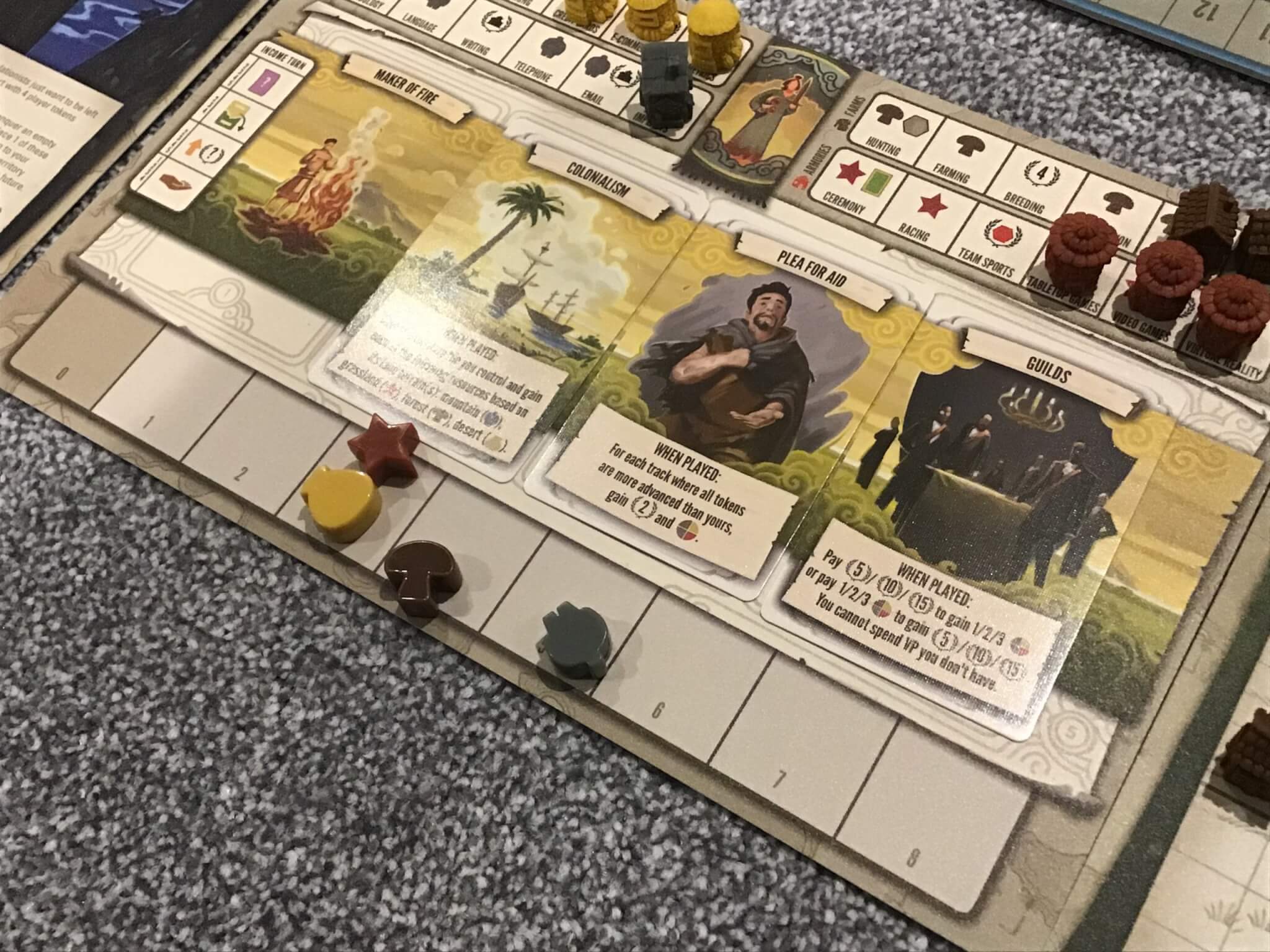
When players reach certain milestones, either on the action tracks or just through general play, things sometimes happen. For example, being the first player to reach a new era on any track means that you can take an associated building to place on your capital city board, whilst reaching the centre of the board or defeating two enemies in combat will give a points bonus. Some action spaces actually allow players to score tracks or their presence on the board, making a change from actually taking an action (unless the space has multiple uses).
A player will only take one of the actions available to them on their turn before passing, and so the flow of the game is such that players will usually take two to five action turns one at a time before someone breaks off and does an income turn. You’d be surprised at how variable the strategies can be, and some players squeeze every last drop out between income turns, whilst others will breeze through their first one quickly to get a good tapestry card into play.
I’ve mentioned the capital city board a few times now so I’ll explain that briefly. Basically, each one is a nine by nine grid of squares, which is then further broken down into nine smaller squares per, erm, square. Randomly about these boards are rivers and lakes marked by red dots which cannot be built on, but players are free to put the buildings they have earned onto any open space. Whenever a full cube is marked as full (of red dots and buildings) then the player earns a resource of their choice, whilst when a whole row is filled, they may gain points during the income turn depending on which score markers they have uncovered.
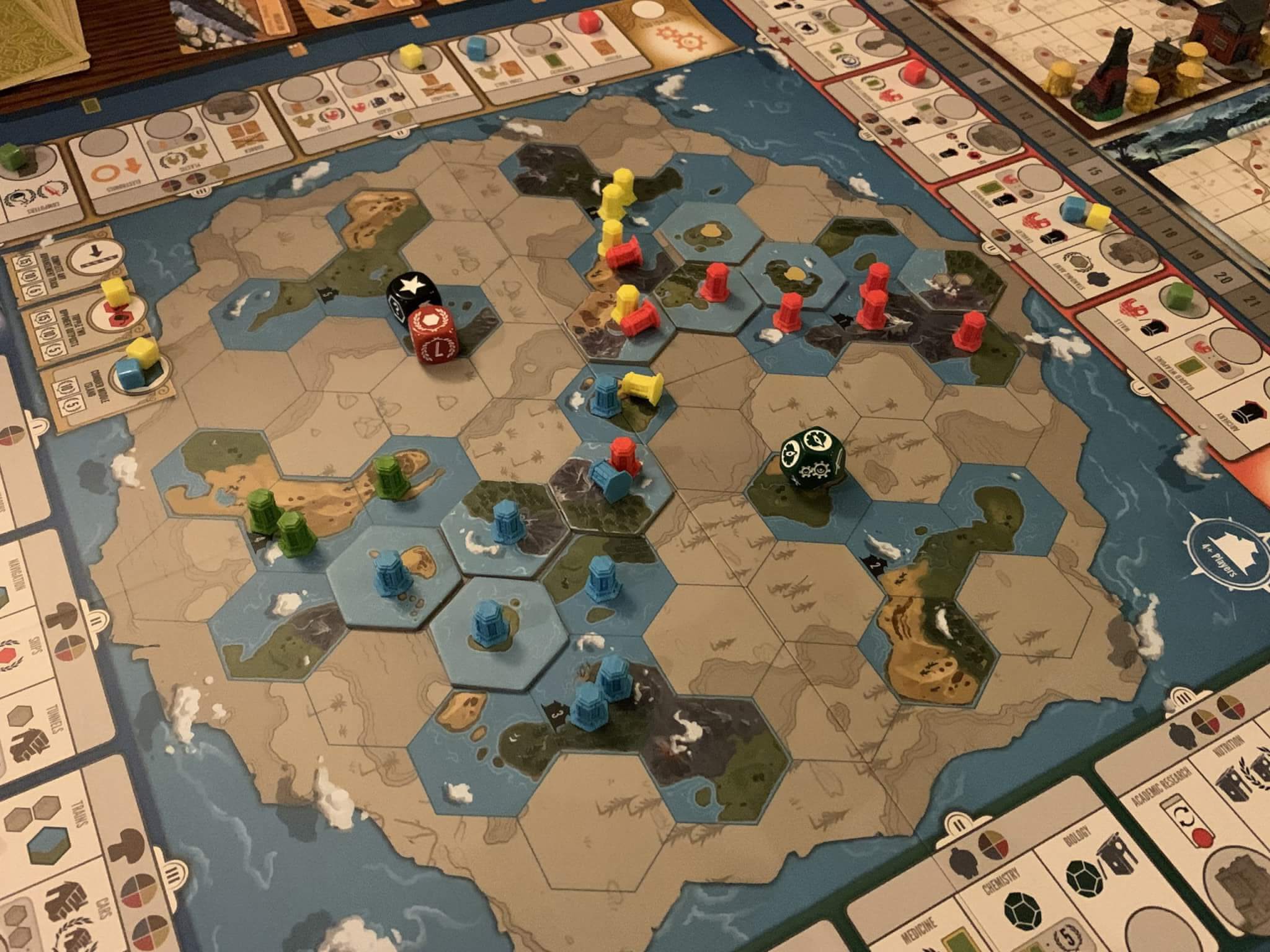
Tapestry ends when the final player performs their fifth and final income turn, with the points all being tallied on the side of the board. Whether you think it’s a good thing or not, it’s entirely possible for players to reach in excess of three hundred (occasionally) or at least two hundred and fifty (commonly) points. Conversely, a new player will be lucky to score two hundred and a player who is otherwise competent and experienced at games in general will likely land at something like 160 to 180 points.
I honestly can’t remember the last time I played a game that offered such potentially huge differences in point-scoring. If I look at my favourite two Stonemaier Games products (Viticulture and Charterstone) the potential swings are nowhere near that big, and I have to admit this took me by surprise at first. I was beaten so badly in my first game of Tapestry that I was very tempted to join the naysayers and abandon it to the charity shop, but something — maybe morbid curiosity — caused me to try again.
The more games of Tapestry that I play, the more I’ve noticed a pattern. New players don’t do especially well (in general) because there are elements in the game that are, frankly, random and unwelcome. Similarly though, more experienced players tend to be able to either convert that randomness into opportunity more readily, or they simply know how to play around it by following one of several very successful strategies.
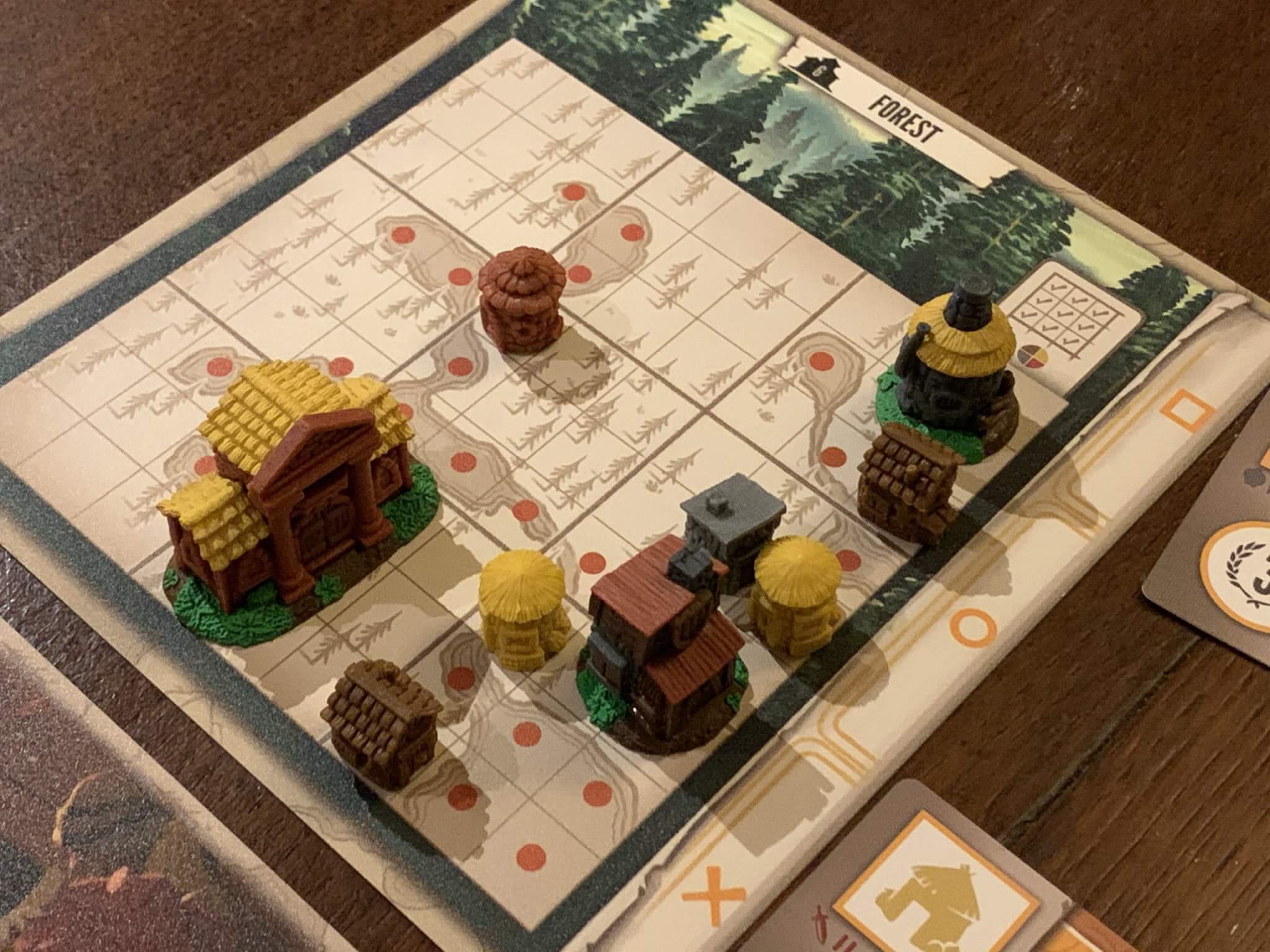
What this leads me to believe, honestly, is that Tapestry is simply a game that is more fiercely competitive than most and, putting it simply, there are no catch-up mechanics or training wheels. I wonder if Tapestry has hit a nerve with a lot of people because they are bad at it, and rather than putting in the work to improve their game over iterative cycles, they’ve just chalked it off as a bad egg and ditched it. As I said earlier, I don’t think it’s “the best game I’ve ever played” but there is something to be said for feeling that I’ve achieved something by myself, perhaps against all the odds.
If I compare Tapestry to a number of other modern euro or worker placement games, I’m forced to think about how open it’s design is versus how closed others might be. In many games where the average score is say seventy-five to a hundred points, it’s uncommon for the spread across players to be more than ten. That’s often a deliberate result of many hours of playtesting and refinement to ensure that no one strategy is uniquely better than another.
Where Tapestry is concerned, I have no doubt that plenty of playtesting took place, but I just get the feeling that Stegmaier decided he wanted to let players run a little more freely than most other designers do. In my opinion, there’s credit due for that and I do feel that it makes for a better game in the long run, but there’s equally no doubt that Tapestry can frustrate and infuriate new players and alienate very inexperienced gamers.
You can purchase Tapestry on Amazon.
Love board games? Check out our list of the top board games we’ve reviewed.

Comments are closed.